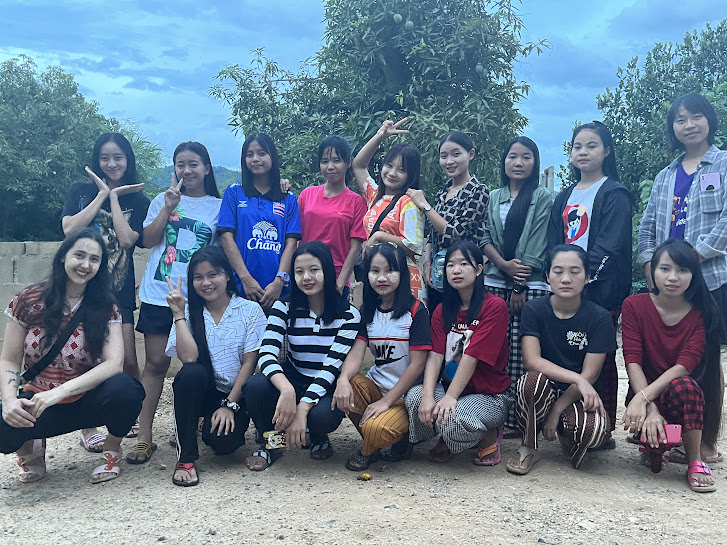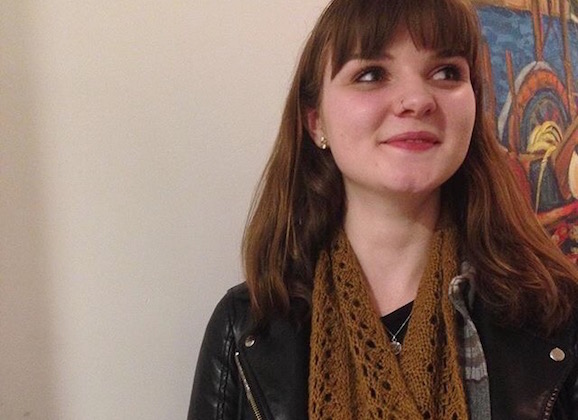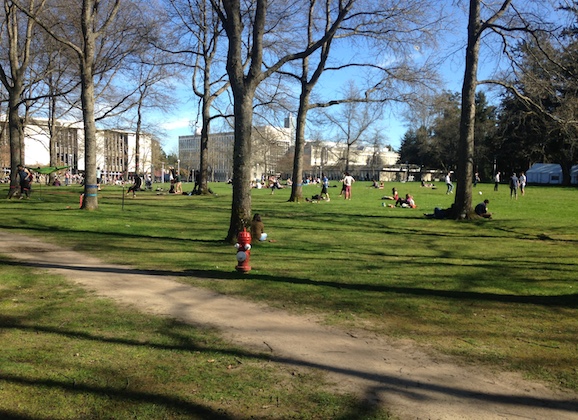Starting My Internship in Thailand
Guest post by Isabel
Six weeks ago, I stepped off the plane at Bangkok’s Suvarnabhumi airport. Six hours later, after a much-needed shower and nap, I woke to the thundering of a monsoon. The metal roof of my my storage-container-turned-hostel-room amplified the torrent to deafening proportions.
I gathered my things, thankful for the rain-cover protecting my book-filled backpack, and headed into the downpour to catch my next flight. Flying from Bangkok, in the South of Thailand, to Mae Hong Son in the Northwest, the topography changes quickly and drastically.
In the course of a two-hour flight, Bangkok’s sprawling cityscape gave way to vibrant green rice fields, winding roads and small lakeside towns, and finally to a lush, wild expanse of jungle as we traversed the mountainous, rural region that will be my home for six months.

A moody rainy-season sky over newly-planted rice paddies. The peaks of Nai Soi’s Buddhist temple shine against the hills in the distance.
After two days in Mae Hong Son, I hopped in a truck for the final leg of my journey: a 30-minute drive to Dokhita, a small village just on the Thai side of the Thai-Burma border.
Dohkita and the neighbouring town of Nai Soi sit in close proximity to Refugee Camp 1. This camp, like the others, houses thousands of Karenni people who have been displaced from their homes in Karenni State by ethnic and political persecution.
A military coup in February 2021 ousted Burma’s democratic government, which was still in its political infancy, with devastating consequences. One such consequence is renewed Burmese aggression in Karenni state, and reinvigorated conflict between the Karenni Army (and other armed resistance groups) and the Burmese military in the region.
This violence, as well as abuses against students, ethnic minorities and political dissidents in urban areas, has led to a new surge of people seeking safety across the border. Currently, around 92,000 refugees from Burma are living in Thailand.
Here at the Karenni Socal Development Centre (KSDC), my colleague Rowan and I work as English teachers in the centre’s Advanced Community Management Training Course (ACMTC).
KSDC offers post-secondary education for Karenni young adult refugees. Most students here either want to go on to university education, or to careers in education, community work or politics. The ACMTC students study work skills, social studies, information technology, office management, international law, and English.
Their ages range from 17 to 28 and their backgrounds vary – some have grown up in the nearby refugee camp; others have recently been forced to leave their homes in Burmese cities like Loikaw and Yangon, or rural villages in in Karenni State, by the aggressions of the Burmese military.
Like many before them, they have made a dangerous journey through the thickly-jungled mountains to safety in Thailand, sometimes spending time at IDP camps in the jungle before making their way here.
By contrast, KSDC is a relaxed, joyful and peaceful microcosm of community. The students are friendly, musical, and diligent. The administrators and teachers are dedicated, hardworking and inspiring.
I’m settling into the easygoing pace of life, although the calm weekly rhythm and routine is peppered with the occasional foreigner-fiasco (note to future interns: don’t bathe in the river at night, because that’s when the red ants come out to the banks, and they will fight back against your trampling with fire and fury).
In the beginning, I experienced more homesickness than I expected from my normally-adventurous self before departing. While I had to patch a couple fault lines in my sunny disposition, I’m stronger for it, having learned lessons in resilience and adaptation.
I ground myself by thinking about why I’m here, and finding strength in my intentions and purpose. Part of adjusting to being in a new, different place is finding ways to support my health so I can show up as an English teacher and be the best I can at the work I’m here to do. English, as an international language, is a valuable tool for advocacy; it helps Karenni people communicate with the wider world.
I’m here to teach, but I’m also learning constantly. This place is a consistent series of lessons in grassroots organizing.The KSDC is an incredible organization, and it’s a node in a network of Karenni community programs.
Community organizers maintain a variety of social services in and around the refugee camps, including social welfare and health programs, schools, and women’s organizations.
The KSDC is one such service – it provides an opportunity for students to further their studies and gain knowledge and skills that support leadership, community organizing, advocacy, and other social and political work.
It’s part of an expansive, acronym-filled network of community organizations filled with conscientious, politically-motivated people, many of whom are graduates from KSDC and the nearby Karenni National College (KnNC).

The washing station, with a view of the mango, jackfruit, papaya and palm trees that frame the food-garden.
Isabel Simons is a Political Science student who is currently teaching Myanmarese refugee youth at the Karenni Social Development Center in northern Thailand. Her internship is organized through UVic’s Centre for Asia-Pacific Initiatives (CAPI) and funded by the Canadian Queen Elizabeth II Diamond Jubilee Scholarship program. You can keep up with all the CAPI interns on the CAPI blog.




